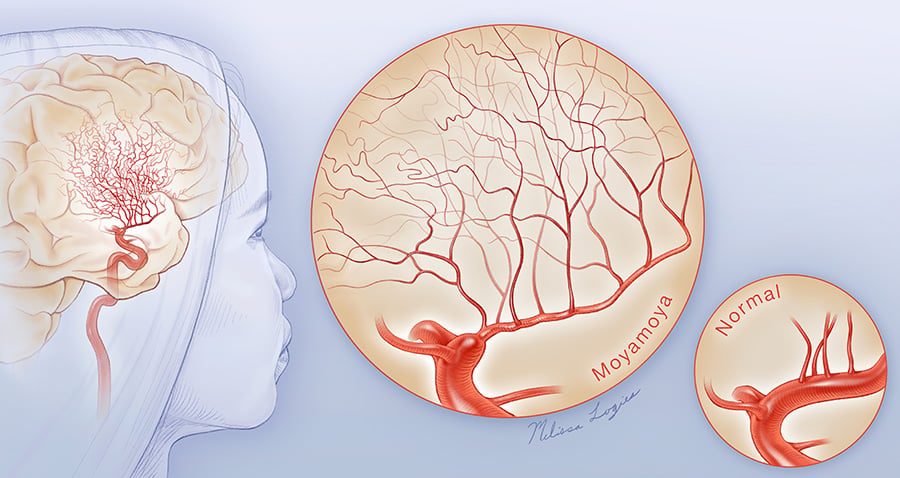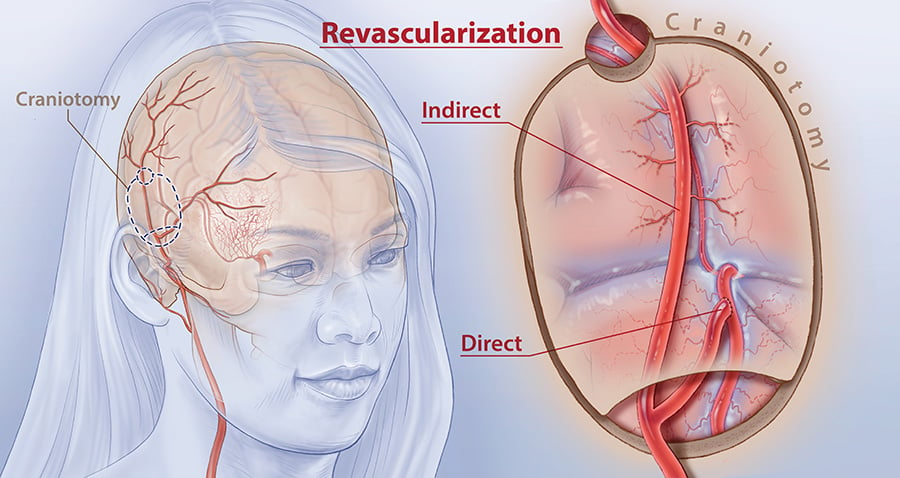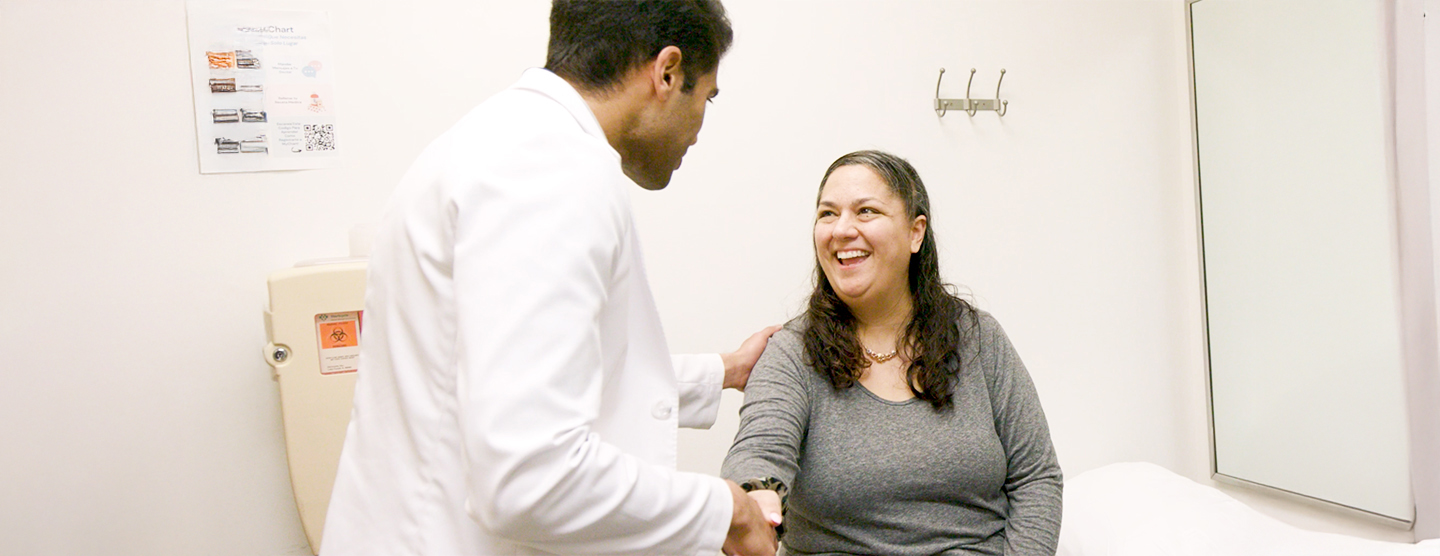Moyamoya Disease
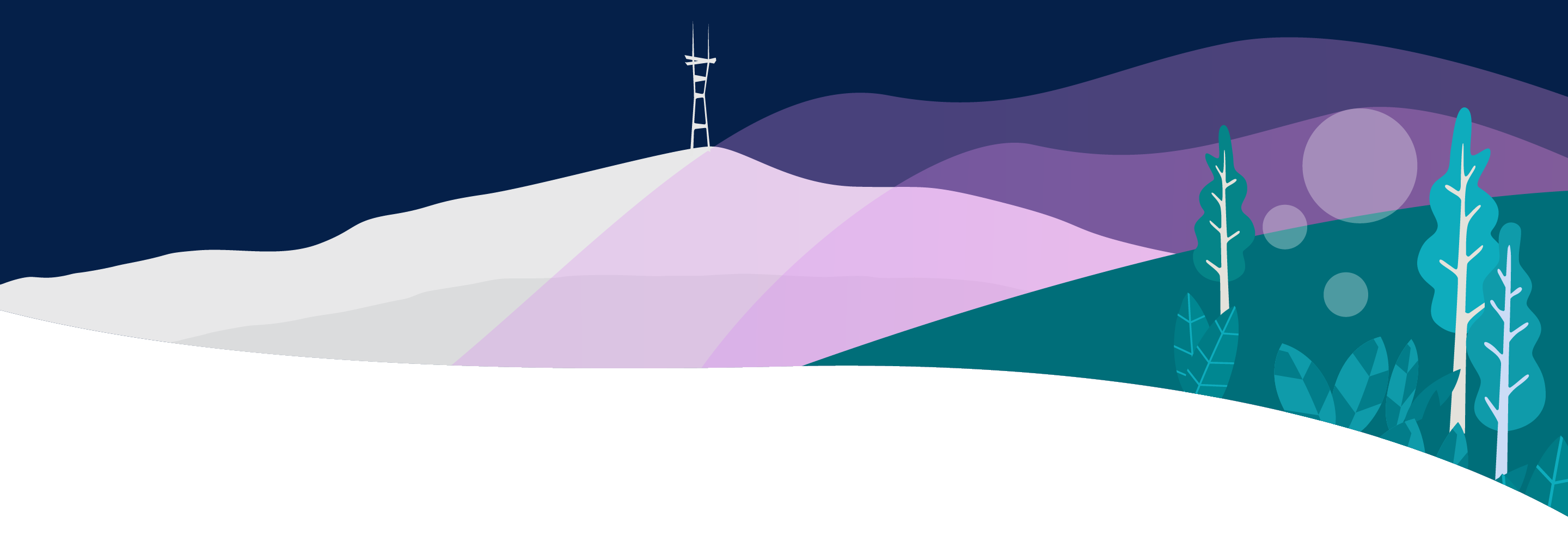
Overview
Moyamoya disease is a rare condition in which the carotid arteries (the main vessels that supply blood to the brain) are narrowed or blocked. The body tries to compensate for this reduced blood flow by growing tiny new blood vessels at the base of the brain. Nevertheless, the inadequate blood supply to the brain can cause ministrokes (called transient ischemic attacks, or TIAs), full-scale strokes and seizures. In addition, the newly formed blood vessels are fragile and can burst or leak, causing bleeding in the brain. Unless the blockages are treated, symptoms will worsen over time and can lead to serious or permanent brain damage.
The disease was first described in Japan in the 1960s. Moyamoya means "puff of smoke" in Japanese, a reference to how the characteristic tangle of new blood vessels appears on imaging tests.
Moyamoya is most common in children but can also affect adults. We don't know what causes the disease. It's most common in East Asian countries, such as Japan, Korea and China, which suggests there's a genetic factor. It's also associated with certain other conditions, including Down syndrome, sickle cell disease, neurofibromatosis type 1 and hyperthyroidism.
While moyamoya disease can't be cured, we have treatments that may optimize outcomes. We can use medications, such as blood thinners, to manage symptoms and reduce stroke risk. We also have several surgical procedures for widening blocked blood vessels, restoring blood flow to the brain.
Our approach to moyamoya disease
UCSF is renowned for its expertise in conditions involving the brain's blood vessels. We take a team approach to caring for people with moyamoya disease, with vascular neurologists, vascular neurosurgeons and neuroradiologists working closely together to evaluate each patient and design effective, individualized treatment plans. Our support extends into long-term follow-up care, as we actively monitor patients' risks of strokes and other complications. Recognizing that this is a lifelong condition requiring ongoing monitoring and treatment, we aim to build enduring relationships with our patients.
Awards & recognition
-
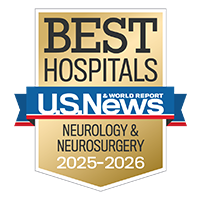
Best in the West and No. 2 in the nation for neurology & neurosurgery
-
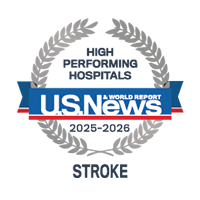
Rated high-performing hospital for stroke care
Symptoms
Symptoms of moyamoya disease are related to reduced blood flow to the brain. With early detection and treatment, we may be able to prevent strokes. Early signs of the disease include:
- Headaches
- Seizures
- Weakness, numbness or paralysis in the face, arm or leg, typically on one side of the body
- Cognitive or sensory impairment, such as vision problems
- Involuntary movements
Please note that these are also symptoms of stroke, so even if they come and go, you should seek medical attention as soon as possible.
Diagnosis
Moyamoya disease is usually diagnosed by a vascular neurologist, a specialist in the blood vessels that supply the nervous system. To make a diagnosis and detect any underlying conditions, the doctor will order tests that can reveal blocked arteries or newly formed blood vessels in the brain. These tests may include:
- Blood tests. Blood work is done to check for other conditions that can mimic Moyamoya disease.
- Cerebral angiogram. This is the definitive test to confirm moyamoya disease. A catheter (a long, thin tube) is inserted into a blood vessel in the groin and guided to the brain using X-ray imaging. A special dye that shows up on X-rays is then injected into the catheter, allowing the doctor to see narrowing, blockages or new blood vessels.
- Magnetic resonance angiogram. Unlike a standard angiogram, this noninvasive imaging test uses radio waves and a powerful magnet to create pictures of the brain's blood vessels.
- CT angiogram. This test combines a CT scan – a type of X-ray that produces cross-sectional images – with injection of a special dye to produce pictures of blood vessels in the head and neck.
- Perfusion MRI scan. This advanced type of MRI scan generates detailed images of brain tissue that allow doctors to measure blood flow to the brain. The results help them determine whether surgery is needed.
Because some genetic variants have been associated with Moyamoya disease, we also offer genetic testing for those with a family history of the condition.
Treatment
The goal of treatment is to reduce symptoms and improve blood flow in the brain. We may use medications or surgery (or both), depending on such factors as age, overall health and the condition's severity. While there's no cure for moyamoya disease, we have effective treatments that can help prevent strokes and other complications.
Medications
For some patients, the only treatment needed is medication. These can include:
- Blood thinners. If you have no symptoms or only mild symptoms, your doctor may recommend that you take aspirin or another blood thinner to prevent strokes.
- Vasodilators. These drugs relax and widen blood vessels, which can help improve blood flow through the brain and reduce headaches.
- Anti-seizure medications. These may be prescribed if the disease is causing seizures.
Surgery
We have procedures to open narrowed arteries or bypass blocked blood vessels. We typically recommend them when a patient is having strokes or showing other signs of worsening blood flow to the brain. There are two main types of surgery:
- Direct revascularization. In this procedure, the surgeon connects a scalp artery directly to the middle brain artery, which immediately increases blood flow to the brain.
- Indirect revascularization. This involves laying a blood vessel or blood-rich tissues over the brain's surface to stimulate the growth of new blood vessels that will supply the brain. There are several possible techniques, depending on the tissue or blood vessel used. The indirect approach is slower than direct revascularization, taking months to be fully established. But it's effective in the long run.
Patients typically spend two days in the hospital following surgery and are able to resume normal activities in about two weeks.
Surgery is often effective in alleviating symptoms. However, patients still need long-term monitoring, with regular imaging tests to make sure the disease isn't progressing and to prevent future strokes.
Moyamoya disease treatment options
In this rare condition, the main vessels supplying blood to the brain are narrowed or blocked. Our experts explain surgical and nonsurgical options for patients with moyamoya.






